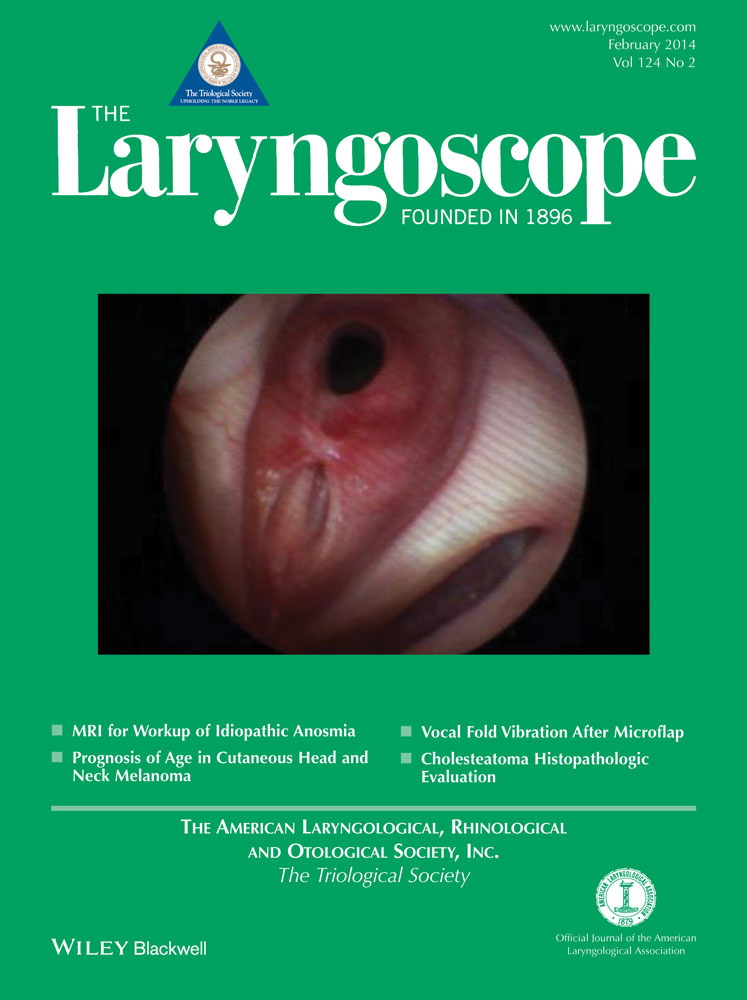A novel in vivo model for evaluating functional restoration of a tissue-engineered salivary gland
Presented at the Triological Society 116th Annual Meeting at COSM, Orlando, Florida, U.S.A., April 10–14, 2013.
This work was supported by a private philanthropic contribution, and NIH/DE R01 DE022386, NIH/NCI P01-CA098912, and COBRE P20-RR016458 grants.
The authors have no other funding, financial relationships, or conflicts of interest to disclose.
Abstract
Objectives/Hypothesis
To create a novel model for development of a tissue-engineered salivary gland from human salivary gland cells that retains progenitor cell markers useful for treatment of radiation-induced xerostomia.
Study Design
A three-dimensional (3D) hyaluronic acid (HA)-based hydrogel scaffold was used to encapsulate primary human salivary gland cells and to obtain organized acini-like spheroids. Hydrogels were implanted into rat models, and cell viability and receptor expression were evaluated.
Methods
A parotid gland surgical resection model for xenografting was developed. Salivary cells loaded in HA hydrogels formed spheroids and in vitro were implanted in the three-fourths resected parotid bed of athymic rats. Implants were removed after 1 week and analyzed for spheroid viability and phenotype retention.
Results
Spheroids in 3D stained positive for HA receptors CD168/RHAMM and CD44, which is also a progenitor cell marker. The parotid gland three-fourths resection model was well-tolerated by rodent hosts, and the salivary cell/hydrogel scaffolds were adherent to the remaining parotid gland, with no obvious signs of inflammation. A majority of human cells in the extracted hydrogels demonstrated robust expression of CD44.
Conclusions
A 3D HA-based hydrogel scaffold that supported long-term culture of salivary gland cells into organized spheroids was established. An in vivo salivary gland resection model was developed that allowed for integration of the 3D HA hydrogel scaffold with the existing glandular parenchyma. The expression of CD44 among salivary cultures may partially explain their regenerative potential, and the expression of CD168/RHAMM along with CD44 may aid the development of these 3D spheroids into regenerated salivary glands
Level of Evidence
NA Laryngoscope, 124:456–461, 2014




